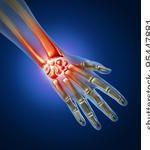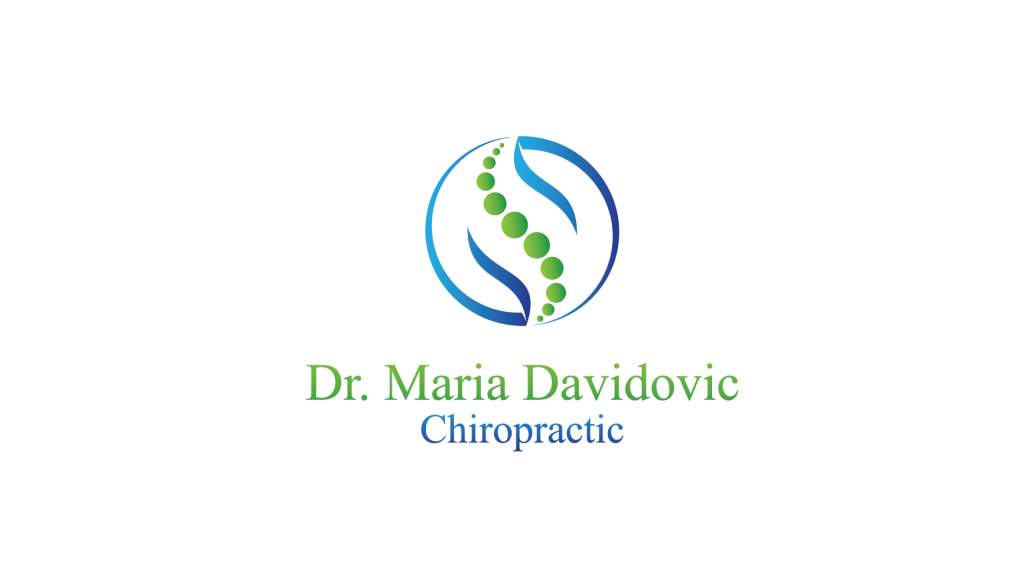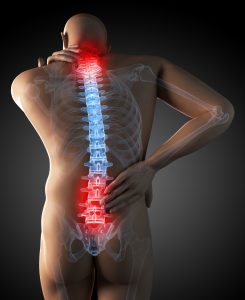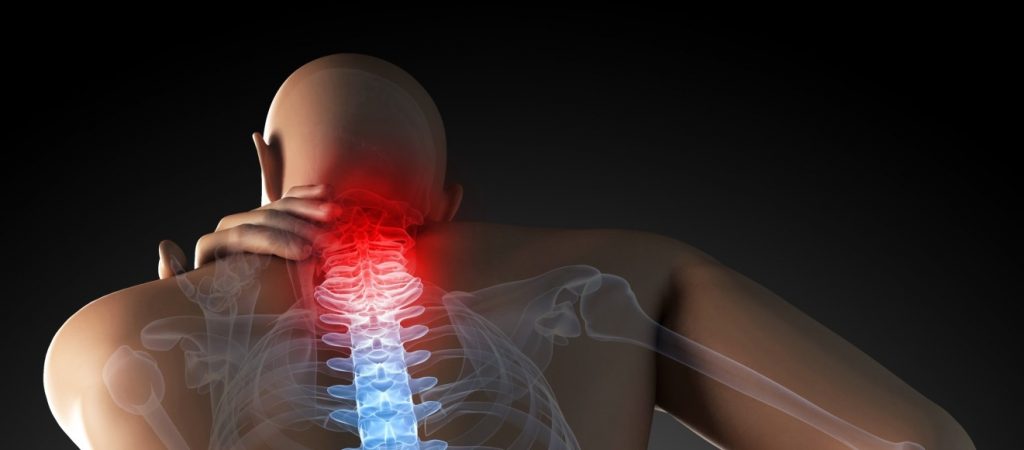Call today: 416-906-0767
Motor Vehicle Accident
Have you been in a Motor Vehicle Accident (MVA) as a driver, passenger, cyclist or pedestrian? You are automatically approved under the minor injury guideline for 12 weeks of chiropractic care. Don’t stress out about the process as I will assist you with documents. After you have spoken to your insurance company, let them know you will be seeking an assessment. They will issue you a claim number. You do not need to see one of the insurance companies turn-style high volume/busy clinic affiliates for physical treatment. Don’t wait to book your appointment with me, a trusted practitioner who offers comprehensive assessments and quality hands-on chiropractic care, soft tissues/muscle treatments, electro-therapy when warranted, rehabilitation and taping techniques. I offer a boutique style zen clinic space that is therapeutic and goal oriented to get you back up and running. Come to a trusted, safe space to assist you in your recovery.
Please email dr.mdavidovic@gmail.com or call 416-906-0767
Conveniently located at Yonge and Summerhill near transit and street parking all around.
Custom Orthotics
Having arch pain? Heel pain? Get your feet assessed to see how orthotics can help give you the support you need. Along with your chiropractic care, custom orthotics are effective devices to help with ankle proprioception and provides support for all three arches of the feet! Email or call to arrange your custom orthotics appointment. New patients are required to first book an initial assessment. The orthotics appointment includes the biomechanical assessment, gait analysis, and 3D foot scan by Footlevelers scanner. All documents are provided upon dispensing the orthotics for insurance purposes.
email: dr.mdavidovic@gmail.com
416-906-0767
Have you been in a car accident? Compassionate care is available here!
Have you been hurt in a car as a driver, passenger or as a cyclist or pedestrian? You are automatically eligible for 12 weeks of care under the Minor Injury Guideline. As a licensed provider, I can directly bill on your behalf to make the process smoother.
If you have a minor to major injury and are looking for an assessment to begin your claim, look no further. As a primary care provider, you may come to a chiropractor to start your treatment under the Minor Injury Guideline. After a car accident, please notify your insurance company so they can provide you with a claim number/file. If you have waited a while and are now noticing pain and require care, I can assist you with any forms you have received from your car insurance company. I am here to assist you in your healing and to make this process less stressful for you as the bundle of forms can seem overwhelming. Come to a trusted provider who will provide a safe and caring environment.
Benefits to coming to an independent chiropractor vs. rehab chain:
I offer quality care with ample treatment time in a beautiful, zen clinic space
I explain all diagnoses, treatment plans and recovery times with you
I offer a closed concept office space (compared to open concept health care settings seen in bigger chain rehab clinics where everyone is exercising together or overhearing each others conditions or treatments. I value your privacy and will do my best to ensure you are comfortable and feel secure
Dr. Maria Davidovic Chiropractic
1246 Yonge St. Suite 303
Toronto, ON M4T 1W5
dr.mdavidovic@gmail.com
416-906-0767
Been in a motor vehicle accident? Have Whiplash?
 Have you been in a motor vehicle accident as a driver, passenger, cyclist or pedestrian?
Have you been in a motor vehicle accident as a driver, passenger, cyclist or pedestrian?
Even if you haven’t felt immediate pain after a car accident, you may start to feel pain 24hours or even weeks post collision. Whiplash can present itself with minor, moderate or severe symptoms. It is very important to report the accident and seek appropriate care. If you have been in a car accident, you are automatically eligible for coverage under the Ministry of Injury Guidelines. Book your initial examination to ensure you recover and continue to lead your pre-accident life in a healthy state. I offer a caring environment with evidence based care and rehabilitation to assist in recovery.
Involved in a motor vehicle collision? call or email today to get the help you need and deserve.
call 416-906-0767 or email dr.mdavidovic@gmail.com to book your assessment now. Visit www.drmdchiropractic.com
Dr. Maria Davidovic Chiropractic
1246 Yonge St. Suite 303
Toronto, ON M4T 1W5
416-906-0767
dr.mdavidovic@gmail.com
Spine friendly tools that help prevent pain
 Want to learn how to offset muscular, neck and back pain whether you’re at home, in the office or sitting on a bus/plane? Here are a list of simple, inexpensive devices to have with you, at home, or even in your luggage:
Want to learn how to offset muscular, neck and back pain whether you’re at home, in the office or sitting on a bus/plane? Here are a list of simple, inexpensive devices to have with you, at home, or even in your luggage:
- A lacrosse ball or tennis ball
- A foam roller (small for convenience)
- A backvitalizer*
- A posture medic shoulder strap*
- A mat (yoga or regular)
- A good supportive pillow
- Good supportive shoes/orthotics*
The * denotes that these would require an assessment to ensure proper use.
If you’d like to learn how these can all provide you pain relief and help prevent future spine/muscle related pain, feel free to contact Dr. Maria Davidovic, a Toronto Chiropractor, to book your initial visit or follow-up appointment.
Carpal Tunnel Syndrome (CTS): what is it and how effective are non-surgical treatments?
 What is CTS? CTS is a repetitive strain disorder caused by compression of the median nerve as it travels through the carpal tunnel. It is the most commonly compressed nerve in the upper limb. Office workers, manual works are predisposed to repetitive strain wrist injuries due to the nature of computer work and repetitive wrist movements. Symptoms of CTS are pain, paraesthesia, and numbness in the fingers and hand, specifically the palmar aspect of the thumb, index and middle fingers, and radial half of the ring finger (aka the part of the ring finger closest to the middle finger.) Often, symptoms of CTS worsen at night. People often hear about cortisone injections providing instant relief and don’t hear much about all the other treatment interventions available under the conservative treatment section. In a research review, there is strong and moderate evidence for the effectiveness of corticosteroids (oral and injected) providing the most benefit, however, it’s still unclear in research as to how, but there appears to be an anti-inflammatory/neovascular role at play.
What is CTS? CTS is a repetitive strain disorder caused by compression of the median nerve as it travels through the carpal tunnel. It is the most commonly compressed nerve in the upper limb. Office workers, manual works are predisposed to repetitive strain wrist injuries due to the nature of computer work and repetitive wrist movements. Symptoms of CTS are pain, paraesthesia, and numbness in the fingers and hand, specifically the palmar aspect of the thumb, index and middle fingers, and radial half of the ring finger (aka the part of the ring finger closest to the middle finger.) Often, symptoms of CTS worsen at night. People often hear about cortisone injections providing instant relief and don’t hear much about all the other treatment interventions available under the conservative treatment section. In a research review, there is strong and moderate evidence for the effectiveness of corticosteroids (oral and injected) providing the most benefit, however, it’s still unclear in research as to how, but there appears to be an anti-inflammatory/neovascular role at play.
There weren’t any positive long term results with steroid use, only short term. Some serious and common side effects for steroid injections are osteonecrosis (the spontaneous break down of bone) and tendon rupture! A safe and effective intervention found in the research review was splinting, particularly night time splinting was found to be more beneficial than wearing a splint on a continuous basis. There is supporting evidence that targeted massage therapy is more effective than general massage for CTS. There isn’t any conclusive long term evidence for any treatment approach so far. Ergonomic keyboards were found to be moderately beneficial in reducing pain and improving hand function (for short term results only) when compared to a standard keyboard.
Surgical intervention outcomes:
According to surgical intervention, patients with severe carpal tunnel syndrome or whose symptoms have not improved after four to six months of conservative treatment (like after seeing a chiropractor) should be offered surgical decompression. Endoscopic and open techniques are equally effective, but patients return to work an average of one week earlier with endoscopic repair (the less invasive surgery). Surgery may provide improvements in some but doesn’t guarantee full recovery and CTS may reoccur. A good diagnosis and ultrasound/nerve conduction tests to rule out anything else is important.
In my clinical practice, I’ve had positive long-term patient outcomes thus far with the following combined treatment interventions for the upper limb: targeted Graston technique®, targeted active and passive muscle release technique, not just for the wrist, but along the median nerve path in the upper limb and neck, electro-acupuncture, mobilizing/adjusting the cervicothoracic spine, kinesiotaping and nerve glides/specific stretches and active at home exercises. There may be neck or upper limb involvement like a “double-crush” of the median nerve so examining these areas are integral. I found the combination of treatment to be highly effective in my practice, granted as the research review states, it’s important to have a good diagnosis and if the pain persists, I always recommend patients to speak to their general practitioners about ordering blood work to rule out any diseases that may be causing inflammation; to request an ultrasound and to be referred to a neurologist for nerve conduction tests to rule out anything else that may be contributing to the condition. Wearing a wrist brace may keep CTS from worsening and help decrease symptoms by keeping your wrist in a neutral position, but it won’t help much to decrease tension and any restriction in the wrist and arm area. The tension and restriction in the wrist joints and other areas may be contributing to the pain, numbness and weakness. A course of treatment along with patient education would be my first recommendation.
If you’d like to arrange a chiropractic appointment, email dr.mdavidovic@gmail.com or call
416-906-0767
Reference: Huisstede BM et al. Carpal Tunnel Syndrome. Part I Effectiveness of Nonsurgical Treatments – A Systematic Review. Department of General Practice and Rehabilitation Medicine, Erasmus Medical Center, Rotterdam, The Netherlands. Archives of Physical Medicine & Rehabilitation 2010; 91: 981-1004.
What to expect after a chiropractic adjustment
 Do you have chronic pain or stiff joints? Sit in front of the computer all day? Or sit behind the wheel for hours on end? Chiropractors are highly trained in spinal and extremity manipulation, otherwise known as the adjustment. An adjustment involves applying a specific force in a precise direction to a joint that is not moving properly or is “locked-up”. The adjustment loosens the joint to restore proper movement to the spine, joints and supporting structures of the body to assist in faster recovery. When a joint is adjusted, a gas bubble is released causing a “popping” or “cracking” sound or sometimes no sound. The sound is a natural change in the internal pressure of the joint. Your chiropractor will review minor and major risk factors regarding treatment in the informed consent part after your assessment. Treatment is always within the patients comfort.
Do you have chronic pain or stiff joints? Sit in front of the computer all day? Or sit behind the wheel for hours on end? Chiropractors are highly trained in spinal and extremity manipulation, otherwise known as the adjustment. An adjustment involves applying a specific force in a precise direction to a joint that is not moving properly or is “locked-up”. The adjustment loosens the joint to restore proper movement to the spine, joints and supporting structures of the body to assist in faster recovery. When a joint is adjusted, a gas bubble is released causing a “popping” or “cracking” sound or sometimes no sound. The sound is a natural change in the internal pressure of the joint. Your chiropractor will review minor and major risk factors regarding treatment in the informed consent part after your assessment. Treatment is always within the patients comfort.
So you have an adjustment. What happens next, you’re wondering?
After an adjustment, you may feel less pain and more mobile and sometimes within the first 24 hours or so, you may feel sore or achy, similarly, to when you work out and feel great but later may feel sore, especially after doing a new workout or if you worked out harder than usual. Your body will feel better after a few treatments just like how you get used to a regular exercise routine. You don’t really feel the same level of soreness you first did, right? So, if you do ever go for a chiropractic treatment and have an adjustment, and feel sore and achy after, make sure to do some gentle stretching and apply ice using the 10-10-10 principle (10 mins on, 10 mins off, 10 mins on) and always follow-up with your chiropractor who’s aim is to keep your spine healthy by keeping it aligned.
If you’d like to arrange an appointment, email dr.mdavidovic@gmail.com or call 416-906-0767
Do I need to see the chiropractor FOREVER?
 When someone asks me that question, I usually ask them this: “Do you NEED to go see the massage therapist forever? Or how about your optometrist or dentist? Or your GP?” Just like how it would be wise to get a physical as prescribed, get your teeth and eyes checked, it’s important to seek treatment for tension and pain because our bodies often exhibit early warning signs of illness, that if not addressed, may lead to serious complications down the road. We often think we don’t need to see anyone on an ongoing basis unless we’re sick or have had an injury, but it’s very likely the injury you are seeking treatment for is a repetitive strain injury that could have been offset with less treatments earlier on if addressed once the tension first formed.
When someone asks me that question, I usually ask them this: “Do you NEED to go see the massage therapist forever? Or how about your optometrist or dentist? Or your GP?” Just like how it would be wise to get a physical as prescribed, get your teeth and eyes checked, it’s important to seek treatment for tension and pain because our bodies often exhibit early warning signs of illness, that if not addressed, may lead to serious complications down the road. We often think we don’t need to see anyone on an ongoing basis unless we’re sick or have had an injury, but it’s very likely the injury you are seeking treatment for is a repetitive strain injury that could have been offset with less treatments earlier on if addressed once the tension first formed.
Wellness or Maintenance Care
Sure, most people return for treatment because they like how they feel after and can tell when they feel sore and achy and need chiropractic care. That’s a good state of awareness to be in, unlike the counterpart of being unaware and forming more tension and stiffness to the point of chronic pain. Chronic pain puts a damper on your activities of daily living as you age. I make recommendations for patients to come in for check-ups in a reasonable fashion, to help education, and offset the reoccurrence of pain. If we can offset joint stiffness and arthritis via chiropractic care, exercise, dietary changes and stress management, then we attempt to be in our optimal state. Degenerative changes may still occur, but the idea is prevention of conditions that can increase the frequency and duration of pain.
The choice is yours!
If you’d like to arrange an appointment, email dr.mdavidovic@gmail.com or call 416-906-0767
Why “less is more” doesn’t work at first with chiropractic treatment
Have you ever had a terrible headache?
One of those bad headaches for a few hours where you feel drained and just want it to end already? What typically happens next is you lie down hoping it will end soon or you take a fast acting over the counter pain pill so you can enjoy your day. Shortly after, poof! The headache is gone and you feel a great sense of relief. You go to bed and wake up to be sadly surprised by yet another annoying headache. You start to wonder, was it the way I slept? Is it coming from my neck? It could be one of those, both or neither!
So what is the cause?
Commonly, there is postural strain going on like “text neck” or computer strain and the spinal joints/muscles get irritated. Having a chiropractic assessment will help to determine the root cause. That pain pill may have worked for short term relief, but it didn’t get to the root cause of your headache. Similarly, having a single chiropractic visit may provide great short-term relief, but a few treatments help to tackle the root cause of pain and will help decrease the frequency of reoccurring pain. The tension that’s in your neck and shoulders built up over time and takes time to decrease also. This is why having a few frequent treatments at first, often works better to decrease that pesky “muscle memory” and address the areas that need stretching/strengthening. Similarly, with migraines, some people have certain triggers like bright lights, chocolate, alcohol or stress. If stress management is done regularly (not just one yoga/meditative class, but a regular routine that works for you) it often produces better long-term results. Maybe it’s having regular “tune –up” treatments to offset joint pain and muscle tension, going to bed early or avoiding certain triggers like decreasing the brightness setting on your phone. I am here to help guide you on ways to decrease pain not just on a short-term basis, but on a long term basis with the use of self-directed stretches/exercises and chiropractic treatment plans that will help keep your spine aligned.
If you would like to arrange a chiropractic appointment, please email dr.mdavidovic@gmail.com or call 416-906-0767
Do you have mechanical neck pain?
 Neck pain has become increasingly common in that 2 out of 3 people will experience neck pain at some point. Mechanical neck pain and headache coming from the neck (cervicogenic headache) are quite common, so here is some info for you to help you further understand the relationship between spinal manipulation therapy (SMT) or the “adjustment” and decreasing neck pain.
Neck pain has become increasingly common in that 2 out of 3 people will experience neck pain at some point. Mechanical neck pain and headache coming from the neck (cervicogenic headache) are quite common, so here is some info for you to help you further understand the relationship between spinal manipulation therapy (SMT) or the “adjustment” and decreasing neck pain.
What does Mechanical neck pain mean?
Mechanical neck pain (MNP) just means neck pain that gets worse when we use our neck more and the pain is coming from parts of the cervical spine that allow us to move our head around and up and down. Mechanical neck pain doesn’t come from “pinched” or irritated nerves, instead the pain is coming from inflamed facet joints (joints in the neck) and from degenerated or “thinned” disc(s). The disc and facet joints become more inflamed when we use our neck to move our head, and the muscles around the cervical spine begin to spasm. You can think of a muscle spasm similar to a muscle cramp.
Why is the muscle spasm happening?
Muscles that are cramping eventually lead to pain. The spasm occurs as the body’s response to try to stop the movement in the neck. Addressing the root cause of pain in the neck with an assessment of the painful cervical joints that may be “stuck” or restricted will assist in the application of treatment options. An adjustment or alternatively gentle mobilizations (challenging a joint within its normal range) may effectively remove the pain source, which will allow the muscle spasm to subside.
Ways to keep the neck joints happy:
- Sleep with a supportive pillow on you side or back
- Make sure to stretch your neck regularly to avoid stiffness in the cervical spine
- Take computer/phone breaks to avoid looking in one direction for too long
- If you need more details on how to do the above or would like more tips, book an initial visit with Dr. Maria Davidovic
If you’d like to arrange an appointment, email dr.mdavidovic@gmail.com or call 416-906-0767

